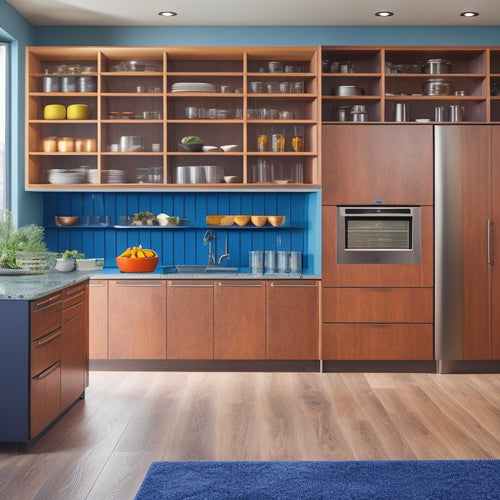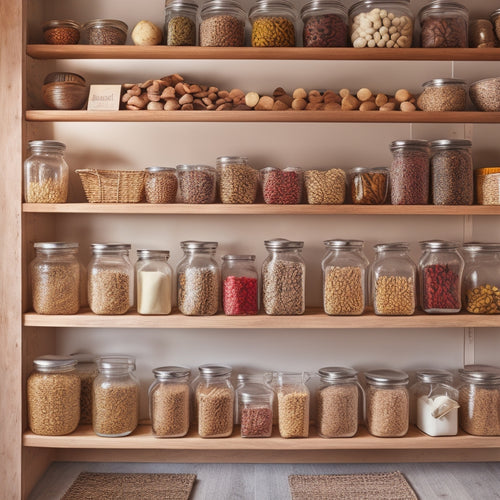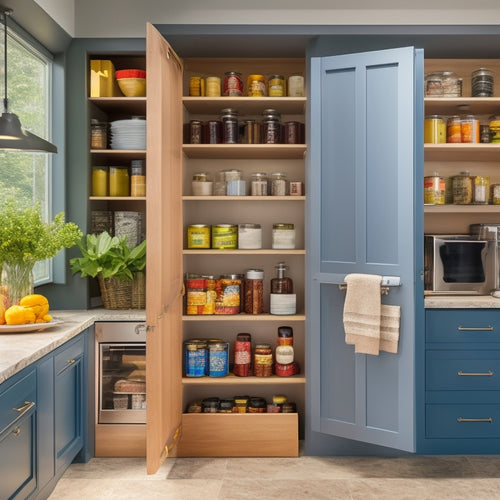
Essential Tools for a Thriving Restaurant Kitchen
Share
A well-equipped restaurant kitchen relies on a strategic selection of essential tools to drive culinary excellence, efficient workflow, and a safe and sanitary environment. Skilled cooks must master fundamental techniques, with proficient knife skills being pivotal for efficient and safe ingredient preparation. Temperature control impacts dish quality and safety, while a well-organized prep area and ample storage solutions maximize workflow. Effective sanitation practices require the right tools, including heavy-duty mops, sanitizing sprayers, and color-coded cleaning tools. By incorporating these essential tools, restaurants can optimize kitchen operations and lay the groundwork for long-term success, and there's more to discover.
Key Takeaways
• A solid foundation of cooking essentials, including proficient knife skills and temperature control, is crucial for culinary excellence.
• A well-organized prep area with essential tools like prep tables, cutting boards, and food processors streamlines food preparation.
• Efficient storage solutions, including refrigerators, freezers, and shelving units, maintain ideal temperatures and prevent cross-contamination.
• Effective sanitation practices require the right tools, such as heavy-duty mops, sanitizing sprayers, and dishwashing gloves, to maintain a clean environment.
• Mastering fundamental cooking techniques and staying organized are essential for a thriving restaurant kitchen operation.
Cooking Essentials for Success
Equipping a restaurant kitchen with the right tools is essential to achieving culinary excellence, and a solid foundation of cooking essentials forms the backbone of a thriving kitchen operation.
At the heart of every successful kitchen are skilled cooks who possess mastery over fundamental techniques. Developing proficient knife skills is pivotal, as it enables chefs to efficiently and safely prepare ingredients.
Temperature control is another crucial aspect, as it directly impacts the quality and safety of dishes. Investing in high-quality pots, pans, and utensils that can withstand extreme temperatures is indispensable.
Prep and Storage Solutions
In a bustling restaurant kitchen, a well-organized prep area and ample storage solutions are necessary for maximizing workflow, reducing waste, and maintaining a clean and sanitary environment. Efficient organization is key to streamlining food preparation, and prep tables, cutting boards, and food processors are crucial tools in this process.
Proper food storage is also crucial, as it prevents cross-contamination and spoilage. Refrigerators, freezers, and shelving units must be designed to maintain ideal temperatures and humidity levels, ensuring that ingredients remain fresh and safe for consumption.
Cleaning and Sanitation Must-Haves
Maintaining a clean and sanitary kitchen environment is equally as crucial as efficient food preparation and storage, as it directly impacts the health and safety of customers and staff alike. Effective sanitation practices require the right tools to guarantee best practices are followed.
Here are the top cleaning and sanitation must-haves for a thriving restaurant kitchen:
-
Heavy-duty mop and bucket: A commercial-grade mop and bucket are essential for daily floor cleaning and sanitizing.
-
Sanitizing sprayers: A reliable sanitizing sprayer guarantees quick and efficient sanitizing of surfaces and equipment.
-
Dishwashing gloves: Dishwashing gloves protect staff from harsh chemicals and hot water while ensuring a thorough cleaning.
- Color-coded cleaning tools: Color-coded cleaning tools prevent cross-contamination and guarantee a sanitary environment.
Frequently Asked Questions
How Often Should I Replace My Kitchen Utensils to Maintain Sanitation?
To maintain excellent sanitation, kitchen utensils should be replaced regularly, ideally every 6-12 months, as part of proper maintenance and sanitation practices, ensuring a clean and safe environment for food preparation and handling.
What Is the Ideal Temperature for Storing Raw Meat in the Refrigerator?
For proper storage, raw meat should be refrigerated at an ideal temperature of 40°F (4°C) or below, adhering to refrigerator guidelines and storage practices that prioritize food safety and prevent cross-contamination.
Can I Use the Same Cutting Board for Raw Meat and Vegetables?
According to the Centers for Disease Control, 1 in 6 Americans fall ill from foodborne diseases annually. To maintain food safety, it's essential to dedicate separate cutting boards for raw meat and vegetables to prevent cross-contamination and potential health risks.
How Do I Prevent Cross-Contamination in My Restaurant Kitchen?
To prevent cross-contamination in your kitchen, prioritize proper sanitization techniques, ensuring all surfaces, utensils, and equipment are thoroughly cleaned and disinfected regularly, mitigating cross-contamination risks and safeguarding customer health.
What Is the Recommended Frequency for Deep Cleaning the Oven?
'Ironically, a sparkling clean oven is often the last thing on a chef's mind, yet it's essential for food safety. Schedule deep cleaning every 1-3 months, depending on usage, to maintain oven hygiene and prevent contamination.'
Related Posts
-

Roll-Out Trays for Modular Kitchen Cabinets
Roll-out trays are the perfect addition to your modular kitchen cabinets, enhancing both accessibility and organizati...
-

Innovative Pantry Storage Ideas for Homes
Revamp your pantry into an efficient space with innovative storage solutions. Use vertical storage options like ceili...
-

Affordable Sliding Pantry Drawer Solutions
If you're looking for affordable sliding pantry drawer solutions, you're in the right place. These drawers maximize s...


